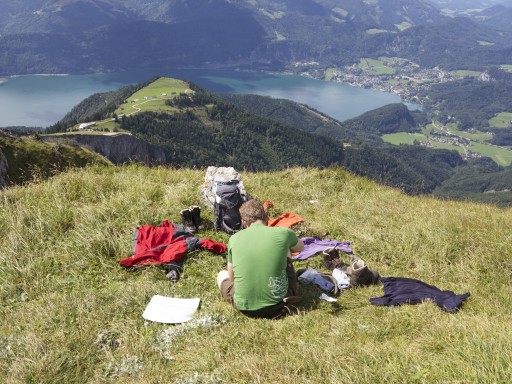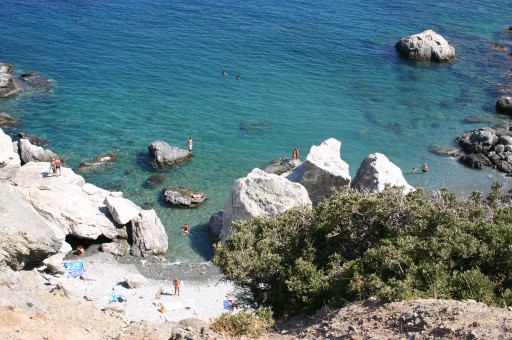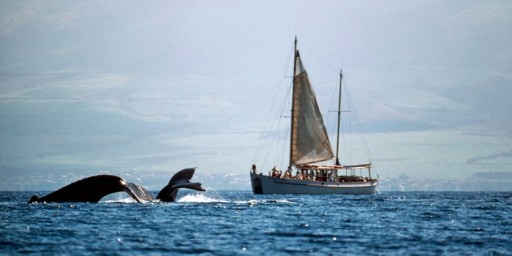This is my fourth article on Green Travelling and I really enjoy sharing my knowledge and experience and hope to be able to help you with choosing the elements for your next vacations. There are many things to keep in mind: travel, accommodation, programme…
A very important part of your holidays are the activities. Depending on your destination and the season there are vast opportunities to get to know new things and have fun. Whether you go to discover a new city or the wildness of the mountains, your activities are what defines the success of your holidays.
But site-seeing as well as outdoor sports can have significant effects on the natural, cultural and social environment. Therefore you should plan well and think of the consequences of your choices.
The aim should always be to support the local population and reduce the impact on the environment to a minimum.
In the following I will give some specific tips for different types of destinations.

Outdoor vacations in the mountains
Mountains can give you energy, make you feel the power of nature and offer you great opportunities for outdoor sports like hiking, mountain-biking or climbing. Especially untouched nature is highly appealing to a lot of people. I myself love to wander through forests listening to the singing of the birds and the wind in the trees, enjoying the view when I reach the peak. It is however important to remind that any trace we leave in nature can have a significant impact on the whole ecosystem. Every footprint, every piece of waste left behind, every noise we make and any other alteration of the environment can change the habitat of many species and lead to changes in their behavior or threaten their existence.
In order to preserve the miracles of an untouched ecosystem you should therefore keep in mind certain things. When you go to a protected area, like National Parks, Nature or Biosphere Reserves, you usually find general and specific rules for this area. The more general ones usually include staying on the marked paths, keeping voice down, not to leave litter behind and not to make fire out of specific areas. These rules should of course be followed everywhere not only in officially protected areas.
Moreover, you should never willingly remove plants, animals or soil from their natural environment. If everyone did so, it could easily lead to the extinction of rare species. Better take photos that you can take home and watch later. Maybe you can even find a guided tour with local experts who can show you how to find, recognize and take great pictures of particular species.
In this way you can not only contribute to the conservation of the environment but also to the local economy and create demand for specialized expert guides.
In case you prefer more adventurous sports like mountain biking or climbing, try also to keep the impact as low as possible. Respect restrictions. Where they apply, there might be particularly sensitive ecosystems.
Did you know that the chalk or magnesium powder used for climbing is highly destructive for the ecosystem? With it you add minerals to the soil that are not meant to be there. In the consequence vegetation changes or is destroyed completely and this can have dramatic effects. Besides the fact that many animals are dependent on plants as a source of food, the soil gets loose and washed off by rain and water flows. This means that the whole landscape changes and with it the ecosystem.

Relaxing on the seaside
Sometimes you would simply like to get away from the stressful working life and enjoy the sun at the seaside.
But did you know that the oceans are one of the most sensitive ecosystems of our world? And at the same time they are so important for our whole atmosphere! Most of the emitted carbon dioxide is absorbed by phytoplankton and other marine vegetation. Many species are dependent on the water quality of our oceans. And our climate is influenced by the currents and temperature differences.
In your daily life but especially in direct contact with the sea you can contribute to the preservation of the marine ecosystem. Although your personal impact might not have immediate direct impact, huge numbers of tourists play an important role in the pollution of the sea. Show a good example and try to avoid negative impact. Sun screen for example is full of chemicals and can work as a poison for small but important organisms. Sometimes in crowded beaches you can even see shining layers on the water surface coming from washed-off sun screen. Of course direct sun can be very unhealthy and you should avoid getting a sunburn, but there are also creams that use natural and biodegradable ingredients or you can cover with light clothes. If you use a cream, in any case take a short shower before you go into the sea or apply it only after swimming.
Marine litter is also a very huge problem. Especially plastic cannot biodegrade, only split up into smaller and smaller pieces with the years. In this way it often ends up in the stomach of fish and birds which die from it. There is even a whole island in the Pacific Ocean, called the Great Pacific Garbage Patch, which has formed in the last years out of uncountable pieces of plastic by the oceanic currents. All these big and little pieces derive from plastic that we throw away every day. Therefore, be sure not to leave behind any litter on the seaside and to avoid as much as possible the use of plastic in your daily life.
Swimming in deserted places can be tempting, but before you do so inform yourself not only about dangers but also if it is allowed to enter the water at that point. There may be endangered species or otherwise especially sensitive ecosystems that should be protected. If it is allowed, also here minimize the traces and avoid loud noises that might disturb for example breeding birds on the coastline.

Wildlife Watching
Big mammals, but also birds, reptiles, amphibians and rare plants are often an aim for ambitioned photographers and nature-lovers. It is a wonderful feeling to see them in their natural environment and to get as close as possible. Many tourist destinations offer guided tours for this purpose and it is a good opportunity to raise awareness for the beauty and value of nature and create an income for local population. However, interaction with wildlife can have a huge impact on the ecosystem. When you book a wildlife watching tour you should check some criteria:
- What is the means of transport during the activity? – A motorized tour is not environmentally friendly and also creates a lot of noise which decreases the possibility to see shy animals.
- Does the operator of the activity have guidelines they follow in order to guarantee sustainable wildlife watching? – There are even labels that confirm the fulfillment of certain criteria. However be cautious about these and research the criteria. Labels can be invented by anyone.
In general, a serious operator cannot guarantee the sight of a specific species. Most wild animals are shy and it is mainly luck if you get to see them. Of course guides know wildlife’s habits and will adapt their tours to it. They should however not try to physically interact with the animals, e.g. by feeding or even chasing them. It is better to keep a certain distance to the animals and like this be able to see them as really wild animals than coming too close and realize that they have been almost domesticated and do not follow their normal behavioral patterns anymore. This can lead to serious problems, like whales that stay in certain bays instead of leaving for breeding and therefore risk to extinct.
Don’t be disappointed if you have not been able to see the “star species”, a good guide is able to draw your attention to other interesting attractions and to explain you more about the local environment.
These are only three of very many types of holiday activities. In the next article I will continue the topic and give some further advice.
Hope you enjoy the summer,
Sabrina
For some cool hiking tips from hiking trails to footwear and outdoor gear, check out this blog.
Images: http://www.whaletrust.org/assets/media/images/header-images/maui-whale-watching-top.jpg
